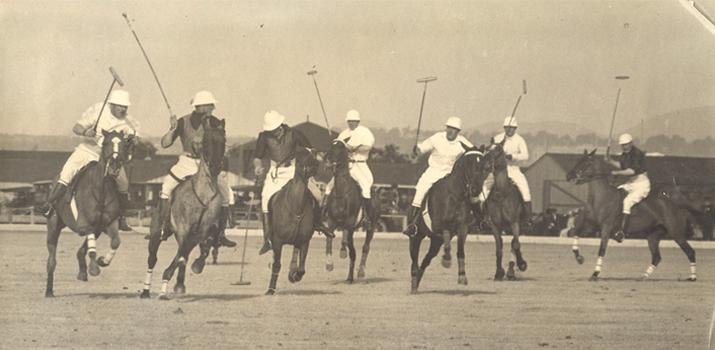
Some Weird (But True) Facts About Men’s Clothing
Written by Beckett SimononYou’re the sartorial inspiration of your friends but did you know these seven surprising facts about your wardrobe?
1. Button-down collars were invented by polo players
Polo players had their hands full trying to hook their opponents’ mallets (all while riding a horse).
But also had to worry about their shirt collars flapping and covering their line of sight.
Their DIY solution? Sewing buttons to keep them down. Brooks Brothers brought the idea to the U.S. and the rest is history.
2. Mackintosh jackets were created by a chemist (named Mackintosh)
Maybe it shouldn't be a surprise that waterproof jackets were first seen in rainy London. Back in 1823, a chemist called Charles Mackintosh joined two fabrics together with a liquid rubber compound.
He created the very first waterproof cloth. So next time you get caught in the rain but stay nice and dry, you'll know who to thank!
3. French cuffs aren’t exactly a French invention
Oui, c’est vrai. French cuffs were mentioned for the first time in Le Comte de Monte-Cristo. But they’re not actually French. Their origin can be traced to the other side of the Channel.
The Brits were the first to make shirts with a row of buttons so they could fasten the cuffs at their right length, folding back the extra.
This technique spread throughout Europe. It evolved into the dressier version later described by Alexandre Dumas.
4. Pocket squares used to serve a purpose
Handkerchiefs have been used since time immemorial (well, since the 14th Century anyway) to blow noses, dry hands, etc.
These white squares were often carried in breast pockets. The coming of disposable tissues disrupted this practice.
Today, the handkerchief has evolved into more delicate fabrics. Pocket squares became a fashion accessory rather than a necessary cleaning device.
5. Boat shoes' soles were inspired by dog paws
It’s no coincidence that the wave-like grooves on the sole of boat shoes resemble a dog paw.
Thanks to a cocker spaniel called Prince, Paul Sperry discovered the key to his big success.
He was amazed by the way his dog moved over slippery surfaces. This inspired him to create shoes patterned after his agile pet.
6. Perforations on Brogues were meant to drain water
Hard to believe but these classic shoes were not initially made for style. During the early 20th century, Brogues were outdoor shoes.
They were specifically for walking on wet terrain as the perforations helped dry the shoes by letting the water drain off.
The name actually comes from the Gaelic bróg, meaning "shoe." However, before you jump in the nearest bog, be advised that today most perforations are just decorative.
7. Gingham cloth used to be striped, not checked
Born in Indonesia, Gingham cloth was traditionally produced with a striped pattern. The name came from the Malay word “genggang,” meaning “striped.”
Then the Brits decided to spruce it up a bit. Tradesmen in Manchester started producing Gingham cloth with a checked pattern. And fashion history was made once again.
In fact, the English football team Manchester United rocks a Gingham check shirt. It is a tribute to the city’s long history of textile manufacturing.
***
Like this post? Make sure you don't miss our next one. Join for weekly updates. Don't forget to share on social media or leave a comment below.
Comments
hi I would like to join and I love this picture.
Leave a comment
Please note, comments must be approved before they are published.